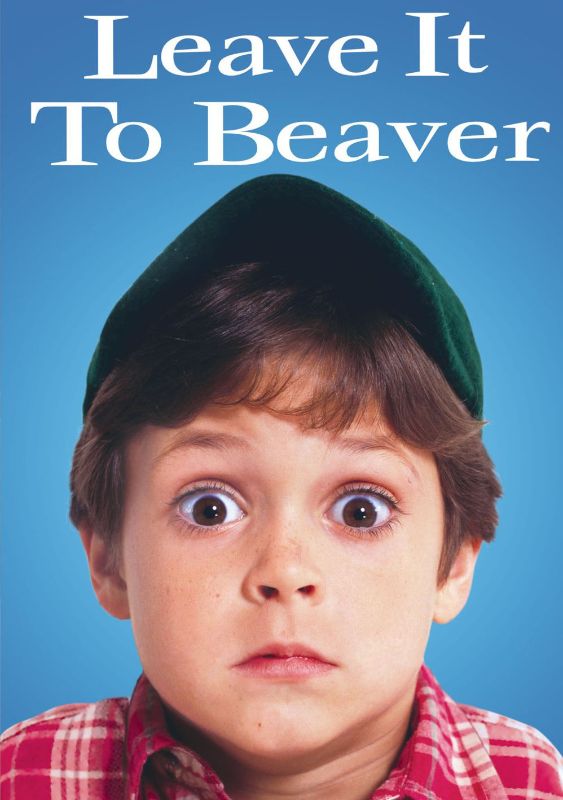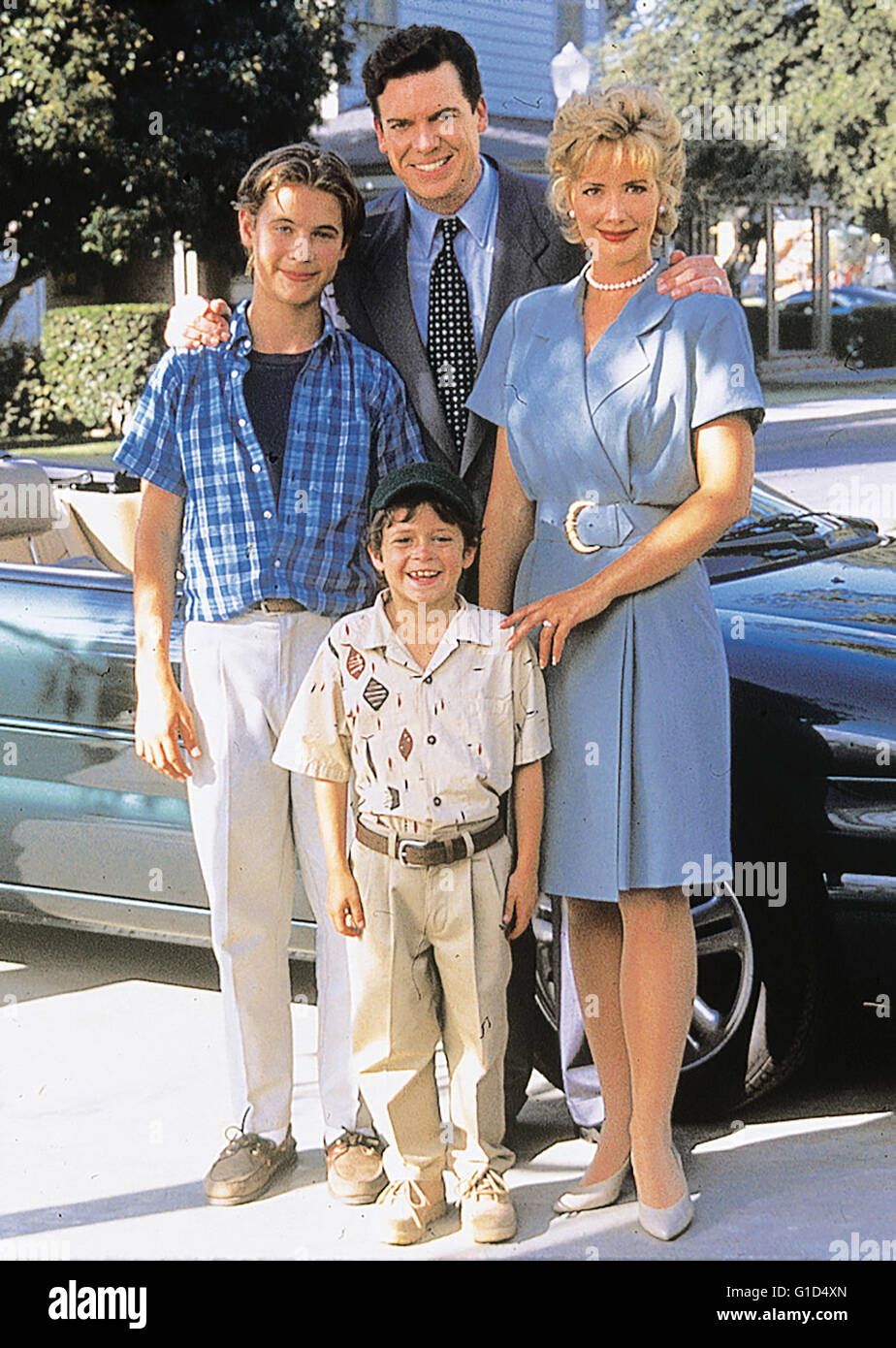Did a television show, capturing the essence of a bygone era, truly reflect the heart of American society? **Leave It to Beaver isn't just a sitcom; it's a meticulously crafted snapshot of the 1950s, offering an unparalleled glimpse into the values, aspirations, and anxieties of a generation.**
The cultural landscape of the mid-20th century, a period of profound transformation, found a fascinating mirror in the humble yet enduring television show Leave It to Beaver. Though the series may not be hailed as a pinnacle of artistic achievement, its significance lies in its remarkable ability to encapsulate the spirit of its time. It meticulously portrayed the American dream, albeit a somewhat idealized and sanitized version, presenting a world where familial harmony and societal norms reigned supreme. The show, which first graced the screens on CBS on October 4, 1957, and later thrived on ABC from October 2, 1958, to June 20, 1963, resonated deeply with a burgeoning audience eager for comfort and reassurance in the wake of World War II's upheaval. It became a cultural touchstone, its characters and scenarios becoming instantly recognizable and reflecting the dominant ethos of the era.
The show's enduring legacy is inextricably linked to its ability to distill complex societal dynamics into easily digestible narratives. Its exploration of themes such as conformity, social expectations, and the pursuit of the American Dream, albeit through a rose-tinted lens, provided a cultural framework for understanding the era. The Cleaver family, with its quintessential suburban setting and carefully constructed storylines, offered a comforting escape, a world where problems were neatly resolved within the span of a half-hour episode. Leave It to Beaver became a cultural shorthand, a symbol of a particular worldview, a nostalgic reminder of an idealized past.
The very title, Leave It to Beaver, carries a rich cultural resonance. The term has permeated the American lexicon, becoming a shorthand for a specific kind of domesticity, a representation of the perceived simplicity and wholesomeness of suburban life in the post-war years. It evokes images of perfectly manicured lawns, apple pies, and a seemingly effortless existence. The term encapsulates a sense of nostalgic longing for a perceived golden age, a yearning for the perceived security and stability of a bygone era.
The show introduced archetypes that would become commonplace in sitcoms. The nuclear family, often seen as the epitome of the American Dream, was a central theme. The Leave It to Beaver family showcased the ideal household during that period. This reinforced common stereotypes such as the dutiful homemaker and the wise father. Ward and June Cleaver, the quintessential parents, embodied the values of their time, providing guidance and discipline, while Beaver, Wally, and their friends navigated the trials and tribulations of childhood.
The creators and actors associated with Leave It to Beaver have become synonymous with the show's enduring popularity. The cast, including Barbara Billingsley, Hugh Beaumont, Tony Dow, and Jerry Mathers, etched themselves into the collective consciousness of the American public. Their performances brought the Cleaver family and their suburban world to life, creating characters that viewers could relate to, even if their lives seemed far removed from the everyday realities of the era. The show's success hinged on its ability to create relatable characters and situations, allowing viewers to identify with the Cleavers and their experiences.
The show's appeal also stems from its inherent morality. As we look back, Leave It to Beaver can be viewed as a morality play. The show offered a clear sense of right and wrong. Each episode often presented a moral dilemma, and the Cleavers, guided by their values, would invariably find a resolution that upheld the principles of honesty, integrity, and family unity. This moral framework, delivered in a palatable and entertaining manner, reinforced the values of the audience, promoting a sense of social responsibility and reinforcing the importance of ethical behavior.
The series offered more than just entertainment; it provided a glimpse into the societal shifts occurring during the 1950s and early 1960s. It showcased the rise of the suburbs, the increasing affluence of the middle class, and the changing roles of men and women. Through the lens of Leave It to Beaver, viewers could observe the aspirations and anxieties of a nation undergoing profound change. The show captured the spirit of a generation, reflecting the hopes, dreams, and values of an evolving society.
In addition to its cultural impact, Leave It to Beaver also serves as a historical artifact. The show's sets, costumes, and dialogue offer a unique window into the material culture of the era. From the furnishings in the Cleaver home to the clothing worn by the characters, the show provides a detailed representation of the aesthetics and lifestyle of the 1950s. This attention to detail makes the show a valuable resource for understanding the nuances of the time.
The show's influence can be seen in the proliferation of similar family-oriented sitcoms that followed, underscoring its impact on the television landscape. Leave It to Beaver set a template for future generations of television writers and producers. The series created a roadmap for exploring the dynamics of family life, and this formula would be emulated by countless shows in the decades to come. Its ability to connect with audiences on an emotional level helped pave the way for similar successes, demonstrating the enduring power of relatable storytelling.
The popularity of the show also gave rise to various interpretations and analyses, revealing the depth and complexity that can be gleaned from seemingly simple stories. The seemingly simple narratives of the show have been subject to considerable academic and cultural analysis. The characters and situations have been examined from sociological, psychological, and historical perspectives, shedding light on the show's profound impact and lasting legacy. These interpretations underscore the enduring relevance of Leave It to Beaver as a cultural artifact.
The term cackerel mentioned in the dictionary definition, offers a fascinating example of how the series employed subtle symbolism. The word, associated with a small, somewhat undesirable fish, can be interpreted as a metaphor. Leave It to Beaver intentionally incorporated such elements to communicate specific ideas, providing a deeper, richer understanding of the show’s messaging and thematic layers.
The success of Leave It to Beaver is also attributed to its effective use of humor and wit. The show's writers and actors crafted stories that resonated with audiences of all ages. While some of the humor might seem dated by today's standards, the show's focus on the universal themes of childhood, family, and friendship ensures its continued appeal. Leave It to Beaver delivered its messages with a light touch, making it both engaging and entertaining. This blend of humor, warmth, and relatable characters ensured its lasting popularity.
In revisiting Leave It to Beaver, one confronts a captivating historical artifact, a testament to the power of storytelling. The show's enduring popularity speaks to its ability to capture the essence of an era, offering a nostalgic glimpse into the values, aspirations, and anxieties of a generation. Whether one considers it a cultural masterpiece or simply a reflection of its time, Leave It to Beaver remains an essential piece of American cultural history.
The show's legacy continues to resonate today, influencing popular culture and sparking debates about the nature of family, values, and the idealized American Dream. The show's enduring presence in reruns and streaming services ensures that new generations of viewers will continue to discover and appreciate the world of Beaver Cleaver and his family, solidifying Leave It to Beaver's status as a timeless classic. Its cultural impact is undeniable.
| Name | Jerry Mathers |
| Born | June 2, 1948, in Sioux City, Iowa, USA |
| Occupation | Actor |
| Known For | Portraying Theodore Beaver Cleaver in Leave It to Beaver |
| Early Career | Began acting at age 2; appeared in commercials |
| Leave It to Beaver Role | Played the lead role of Theodore Beaver Cleaver from 1957-1963 |
| Other Works | Appeared in various television shows, films, and stage productions, including The Trouble with Father and The Farmer's Daughter. |
| Education | Graduated from Notre Dame High School in Sherman Oaks, CA; earned a Bachelor of Arts degree in Philosophy from the University of California, Berkeley |
| Personal Life | Married three times; has three children. |
| Later Life | Became a successful real estate developer and earned a degree in Philosophy. |
| Website Reference | IMDb |



